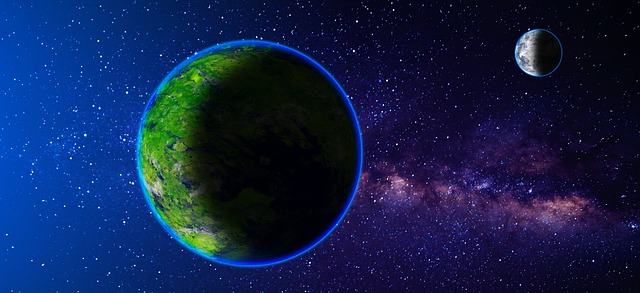In the quest to understand the origins of our planet and the potential for life beyond Earth, modern astronomy is focused on answering two key questions: what were the exact conditions necessary for the formation of our planet and the emergence of life on it, and can such conditions exist elsewhere in the universe? While we are still far from answering these questions definitively, recent discoveries of intriguing star systems have brought us closer to understanding the rarity of our planet and the potential for discovering exciting new worlds.
NASA has officially confirmed over 5000 exoplanets and has identified over 9000 more candidates. However, the majority of the discovered planets are different from anything in our solar system, with a large number of gas giants that are much hotter than Jupiter, as well as super-Earths and mini-Neptunes that do not exist in our solar system. Planets similar to Earth, Mars, Venus, and Mercury are rare, and most exoplanets have been found around red dwarfs. While these stars are the most common in our galaxy, they are not ideal for the emergence of complex life, as they are too active and produce too much radiation.
Research has shown that the right conditions for life to emerge on a planet go beyond the presence of various chemical reactions on its surface. It is also essential to have the right type of architecture in the star system, including the right type of neighboring planets, in order to create the dynamic conditions necessary for the continuous survival of life. Jupiter, for example, is believed to play a crucial role in protecting Earth from destructive collisions while delivering smaller asteroids and comets that provide the chemicals necessary for life. Additionally, the migration of earlier gas giants like Jupiter and Saturn may have been responsible for the formation of Earth from larger planets.
As a result, scientists are increasingly focusing on finding solar analogs, or star systems with planets that are similar to those in our solar system, including at least one gas giant like Jupiter in a similar location in the star system. Recently, scientists discovered a promising star system that resembles our own solar system in many ways. The star, Hipparchos 10445, is approximately 175 light years away from Earth and is practically identical to the Sun, with a similar mass, size, and age of 4.5 billion years.
Most importantly, the star has two planets, one in a location similar to Jupiter and another in a location where Earth would be found. The first planet is approximately double the mass of Saturn and could have a similar effect on its star system as Jupiter has on ours, guiding rocks and redistributing materials while protecting inner planets. The second planet is about three times the mass of Neptune and is likely a small gas giant, with a total mass of about 43 Earths.
The discovery of a solar twin with promising planets is exciting because it could help us understand the rarity of our planet and potentially lead to the discovery of new worlds. However, it is also essential to note that while the star system has many similarities to our own, there are also crucial differences that highlight the complexity of the formation and evolution of planets.
For example, the second planet in the star system is much larger than Earth and likely inhospitable to life as we know it. Additionally, the location of the planets and their orbits suggest that the star system may have experienced a different migration pattern than our own solar system. Furthermore, the discovery of a solar twin with two planets similar to those in our solar system does not necessarily mean that there are many more like it in the universe.
Despite these limitations, the discovery of the star system with promising planets underscores the importance of continued exploration and research to answer fundamental questions about the origins of our planet and the potential for life.
